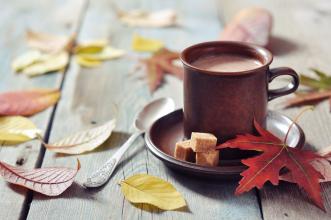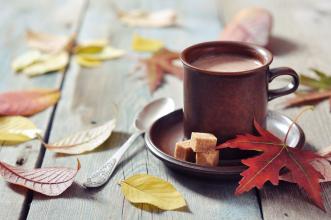Characteristics of Yunnan small seed coffee beans with strong aroma, description of taste and flavor, introduction of grinding degree treatment method
Although the environmental problems of coffee cultivation can reach the standard of hot areas, they are far away from the equator, evaporation, large-scale coffee cultivation in Yunnan is less than 1100m above sea level, the severe drought in Yunnan in recent years, and the frost period in the producing areas, and so on, all make coffee planting can not be guaranteed normally, which directly affects the quality of coffee production. As for other processing problems, not to mention the quality of farmers, tea farmers have been drinking tea for generations, but farmers may not have had coffee in their lives.
Say so much, but it doesn't mean that you haven't had a cup of good Yunnan coffee, and if the post-processing and roasting is good, as a friend here said, the coffee from several hills, such as Pu'erman Laojiang, Kaddura of Manzhong Tian, Tielinka of Baihualing of Lujiang, Baoshan, and Boben of Lujiang, Baoshan, are still good, especially resistant to the old varieties at an altitude of 1800m.
Cutting materials with straight branches, can not use a branch, because a branch cuttings after the new plant can only grow creeping, can not grow into a straight coffee tree. Cuttings should be cut with green uncorked, fully aged leaves, robust straight terminal buds at the bottom of paragraphs 2-3, not semi-corked and corked straight branches. The leaves of cuttings are four inches wide (about 6-8 cm), and each section of cuttings is 4-6 cm long. The cuttings are cut into two pieces, each with a blade, and the cut is oblique and smooth.
The slotting machine generally uses a sand bed with a thickness of 40-50 cm, with coarse sand in the lower part and medium fine sand in the upper part. The shade degree of the slotting bed should be 80-90%. Wash the sand first when using it, or you can mix it with the coconut bran of 1 stroke 2. Using spray equipment, the rooting rate of cuttings is high, but the cost of equipment purchase is high.
The cuttings can be cut obliquely or directly, and the cutting depth is buried at the leaf node. 10-15 cm in a row, with the leaves not covering each other as the standard. Fully sprinkle with water after insertion to make the cuttings in close contact with the sand. After cutting, plastic film should be covered on the cutting bed to reduce water evaporation and improve the rooting rate of cuttings. When covering the plastic film, it should be arched with iron wire or bamboo, inserted on the edge of the sand bed, and then covered with the plastic film, and then pressed to maintain the humidity in the bed. If you use spray equipment, you don't have to cover plastic film.
Yunnan coffee in China is mainly concentrated in Baoshan, Dehong and Pu'er. Although the main varieties are basically Kadim, but due to the local microclimate, soil altitude and other natural reasons, their tastes are also very different. Because Baoshan belongs to the dry-hot valley of Nujiang River, its coffee is rich in taste, rich in aroma and moderate in acidity. On the other hand, Pu'er coffee has a supple taste and bright acidity. Dehong's coffee has not been tasted, and there is no random comment here that Yunnan coffee in China is mainly concentrated in Baoshan, Dehong and Pu'er. Although the main varieties are basically Kadim, but due to the local microclimate, soil altitude and other natural reasons, their tastes are also very different. Because Baoshan belongs to the dry-hot valley of Nujiang River, its coffee is rich in taste, rich in aroma and moderate in acidity. On the other hand, Pu'er coffee has a supple taste and bright acidity. Dehong's coffee has not been tasted, so I won't make any comments here.

Important Notice :
前街咖啡 FrontStreet Coffee has moved to new addredd:
FrontStreet Coffee Address: 315,Donghua East Road,GuangZhou
Tel:020 38364473
- Prev

Introduction to the characteristics of grinding degree of fine Columbia Linglong Flavor quality Manor treatment method
Beautiful Nalinglong raw beans and Nalinglong province have a peak distribution of rainfall throughout the year, with a rainy season that lasts from October of that year to May of the following year, and the dry season lasts for June, July and August. However, even in dry months, coffee farmers will not worry too much, because the warm current caused by trade winds from the southern continent will produce enough water vapor when they meet with a cool night.
- Next

Characteristics of quality, taste and flavor description of half-sun red bourbon El Salvador Himalayan coffee
The coffee fields of El Salvador Himalayan coffee beans are endless and are mostly harvested mechanically in order to achieve economic benefits. When 75% of the coffee fruit in the coffee garden turns red, mechanical harvesting is started, followed by the same pre-washing operation, which is moved into the sink to remove floating beans, sift out the sunken beans, and then use a large pulp screening machine to dig out the pulp and remove the pods covered with pectin. The next stage is related to
Related
- Detailed explanation of Jadeite planting Land in Panamanian Jadeite Manor introduction to the grading system of Jadeite competitive bidding, Red bid, Green bid and Rose Summer
- Story of Coffee planting in Brenka region of Costa Rica Stonehenge Manor anaerobic heavy honey treatment of flavor mouth
- What's on the barrel of Blue Mountain Coffee beans?
- Can American coffee also pull flowers? How to use hot American style to pull out a good-looking pattern?
- Can you make a cold extract with coffee beans? What is the right proportion for cold-extracted coffee formula?
- Indonesian PWN Gold Mandrine Coffee Origin Features Flavor How to Chong? Mandolin coffee is American.
- A brief introduction to the flavor characteristics of Brazilian yellow bourbon coffee beans
- What is the effect of different water quality on the flavor of cold-extracted coffee? What kind of water is best for brewing coffee?
- Why do you think of Rose Summer whenever you mention Panamanian coffee?
- Introduction to the characteristics of authentic blue mountain coffee bean producing areas? What is the CIB Coffee Authority in Jamaica?

